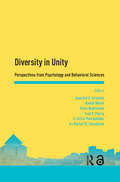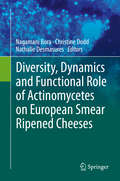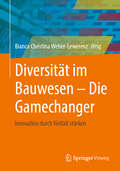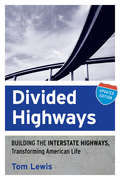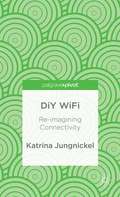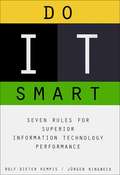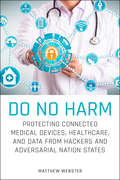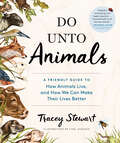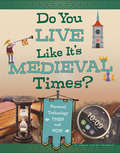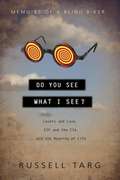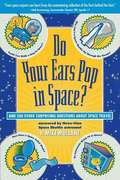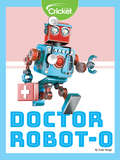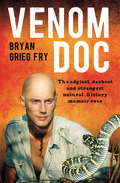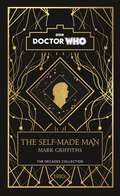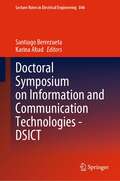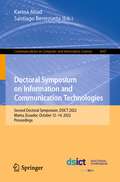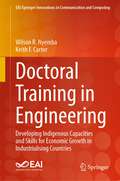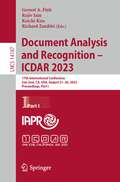- Table View
- List View
Diversity in Unity: Proceedings of the Asia-Pacific Research in Social Sciences and Humanities, Depok, Indonesia, November 7-9, 2016: Topics in Psychology and Behavioral Sciences
by Hamdi Muluk Peter Newcombe Amarina Ariyanto Fred Piercy Elizabeth Poerwandari Sri SuradijonoThe book highlights both the challenges and opportunities in the field of psychology and behavioral sciences, with an emphasis on identifying practical implications for professionals, educators and administrators, and researchers in Asia and Pacific regions. Societies in the said regions have experienced massive changes to their social system, changes that are endured by societies worldwide, such as those related to globalization, new technologies, and new norms regarding respect for individual diversity and well-being. Although the changes offer a wealth of new opportunities, they also act as potential sources of tension and apprehension. The book discusses the state-of-the-art topics, on critical issues, in various sub-fields of psychology and the behavioral sciences, such as Clinical Psychology, Child & Developmental Psychology, Industrial & Organizational Psychology, Experimental Psychology, Social Psychology, and Educational Psychology. This is an Open Access ebook, and can be found on www.taylorfrancis.com.
Diversity, Dynamics and Functional Role of Actinomycetes on European Smear Ripened Cheeses
by Nagamani Bora Christine Dodd Nathalie DesmasuresCheese is a significant part of European culture and its production, both industrial and artisanal, is a significant economic activity. Smear cheeses are one element of that diverse cultural and economic activity. And they are an ecological niche which illustrates the diversity of, especially, though not exclusively, actinomycetes. Mainstream ecology looks at the oceans, soil, rhizosphere, human microbiomes and plant, insect and marine animal symbionts which influence the climate, agriculture, human health and the ecology of higher organisms. But food microbiology can influence human well-being and nutrition and, as an ecological niche, illustrates the same broad principles in action as other ecological studies, but, in many ways offers a more controlled and controllable environment to study. The bacterial diversity present on smear cheese surfaces is like a model system which will provide the vehicle for developing a research strategy for food-environment microbiology. In this book we take a look at food-based ecological niche by focusing on the actinomycetes. This book presents many of the aspects, from the taxonomy of the cheese flora and its interaction with the 'house flora' to the functional manipulation of the organoleptic properties of the dairy product to the pathogenic risk. Modern methods of taxonomic characterization provide significant data in understanding the functional roles of members of the microbial flora including their enzymatic potential, the presence of virulence genes or probiotic factors. Taxonomy guided high throughput metagenome analysis is a generic approach to systems level analysis of microbial ecosystems, such as those found in the food chain. The data generated by metagenomic analysis will require extensive bioinformatic support which will provide the data not only for taxonomic characterization, community analysis and ecosystem dynamics but the data will also provide a foothold into the evolution and ecosystem function of the community. The ultimate understanding of the metabolome and the regulation of such a complex ecosystem will provide the framework for further technological advances in solid state fermentation.
Diversität im Bauwesen - Die Gamechanger: Innovation durch Vielfalt stärken
by Bianca Christina Weber-LewerenzDas Buch klärt auf, weshalb Innovation und neue digitale Technologien in der Baubranche und darüber hinaus wesentlich von einer neuen Denkkultur abhängen. Persönliche Erfahrungsberichte aus der Anwenderpraxis und Einblicke in die Forschung zeigen die vielen menschlichen und technischen Potenziale auf, die bisher teilweise noch unzureichend genutzt werden. Das Buch gibt Beispiele dafür, wie der digitale Wandel sinnvoll und konstruktiv mitgestaltet werden kann. Es blickt auf die historische Entwicklung von Vielfalt am Bau zurück und beleuchtet unternehmerische Wege hin zu mehr Diversität, benennt aber auch die Problemfelder, die den Innovationsprozess behindern. Dabei stellt es neue Wege in Aussicht. Aus der Bestandsaufnahme „Wo stehen wir?“ und der Frage: „Wo wollen (müssen) wir hin?“ leiten sich vielfältige Calls for Action ab. Denn: Diversität stellt den Schlüssel zum Erfolg dar. Diese Erkenntnis ist wichtig, um die Weichen für ein innovatives, nachhaltiges Bauwesen jetzt zu stellen. Das Buch arbeitet die Schlüsselfaktoren und Kernkompetenzen auf allen Ebenen heraus, die maßgeblich für die Förderung von Diversität und Innovation sind. Setzt sie diese konsequent ein, kann die Baubranche eine Vorreiterrolle im In- und Ausland einnehmen.
Divide: The relationship crisis between town and country
by Anna JonesThis book is a call to action. It warns that unless we learn to accept and respect our social, cultural and political differences as town and country people, we are never going to solve the chronic problems in our food system and environment. As we stare down the barrel of climate change, only farmers - who manage two thirds of the UK's landscape - working together with conservation groups can create a healthier food system and bring back nature in diverse abundance. But this fledgling progress is hindered and hamstrung by simplistic debates that still stoke conflict between conservative rural communities and the liberal green movement.Each chapter, from Family and Politics to Animal Welfare and the Environment, explores a different aspect of the urban/rural disconnect, weaving case studies and research with Anna's personal stories of growing up on a small, upland farm. There is a simple theme and a strong message running throughout the book - a plea to respect our differences, recognise each other's strengths and work together to heal the land.
Divided Highways
by Tom LewisWhat do Levittown, the 1939 World's Fair, and the Model T have in common? To what invention can the existence of suburban sprawl, toll booths, mall shopping, an oil-obsessed foreign policy, fast food, and air and noise pollution be attributed? The interstate highway. This landmark enterprise of the 1950s literally changed the face of America for eternity. In 1919, Dwight D. Eisenhower needed sixty-two days to travel from Washington, D. C. , to San Francisco. Now, eighty years and 42,500 miles of paved roads later, the trip can be made in less than seventy-two hours. Divided Highways is the fascinating history behind the efforts to make cement trails across America, told through the stories of the people who dreamed up, mapped out, paved'and even tried to stop'the interstate highways. Popular historian Tom Lewis details "man's triumph over nature" in an engaging, sweeping style. Award-winning film director Ken Burns says: "He tells the story of how we get from point A to point B in America. And just as our lives should be, Lewis makes the journey more interesting and meaningful than the destination. " * Basis of the 1997 Peabody Award-winning PBS documentary.
Diving Deep: Using Machines to Explore the Ocean
by Michelle CusolitoFrom snorkeling to freediving, scuba, submarines, and Challenger Deep, discover the different technologies scientists use to explore the ocean in this deep-sea STEM picture book.How does ocean exploration work? What kinds of machines and equipment help researchers under the sea? How deep can we dive to find out more about the plants and animals that live in the ocean? For fans of Alvin from Flying Deep, Diving Deep introduces all the ways humans have figured out how to engage with, explore, and learn from the oceans.
Diy Wifi
by Katrina JungnickelWho makes WiFi? Why do different makers matter? What do barbeques and backyards have to do with the internet? This book explores how WiFi is made from the ground up, or in this case from the backyard out. Forged around barbeques, made of found, adapted and off-the-shelf materials and installed in ordinary domestic spaces, this book documents the collective work of individuals committed to making 'Ournet not the internet'. Drawing on rich ethnographic material, Jungnickel's research on community WiFi networking provides an overdue account of the innovative digital cultures and practices of ordinary people making extra-ordinary things. What make-do methods, mods and tales of resourceful ingenuity permit is another way of seeing how technologies come into being. It brings to life an Australian version of WiFi, enriching global studies of wireless technology by signalling the potential of comparative studies. Critically, the book presents the first sustained study of homebrew high-tech backyard technologists who imbue a DIY ethos but do not do it alone - they Do-It-Together (DIT). This timely critique of collective DIT innovation in an increasingly networked society will be of interest to scholars and practitioners of maker culture.
Do It Smart
by Rolf-Dieter Kempis Jurgen RingbackA decade ago, manufacturing companies had visions of paperless offices, automated plants, and virtual enterprises. But the euphoria quickly evaporated when these visions failed to materialize. Now, from in-depth interviews in a worldwide survey of seventy manufacturing firms, a research team from the prestigious consulting group McKinsey & Company concludes that, far from being a failure, information technology (IT) can be a vital strategic weapon in the manufacturing sector, just as it has proved to be in service industries. In Do IT Smart, experts Rolf-Dieter Kempis and Jürgen Ringbeck along with the McKinsey team identify four cultures of IT users -- stars, big spenders, cautious spenders, and laggards -- based on how efficiently and effectively the users manage IT. The stars stand out because their strong command of IT means they are better able to manage core processes such as R&D, sales and service, and order processing, which in turn produces tangible payoffs in profitability, growth, and market share. From their study of star performers, the authors formulate seven rules for developing a superior IT organization. First, they argue, managers must make IT a top management issue and, second, a priority in product development. IT must be viewed as a strategic tool so that IT strategy can be aligned with business strategy. Clear objectives must be set, and core business processes redesigned. Warning that IT is reaching saturation in administrative applications, the authors describe how it is far more profitable to integrate IT into marketing, sales, and customer service. Finally, they describe how all these elements must be brought together into a lean, customer-oriented IT network. McKinsey's breakthrough study shows that as organizations are increasingly overwhelmed with data, IT will become more of a dividing line between the winners and the losers. IT stars will make quantum leaps in effectiveness, while poor management of IT results in a cost explosion. Managers and information officers who want their business to keep and gain the competitive edge IT offers need this unprecedented insight into how to Do IT Smart.
Do No Harm: Protecting Connected Medical Devices, Healthcare, and Data from Hackers and Adversarial Nation States
by Matthew WebsterDiscover the security risks that accompany the widespread adoption of new medical devices and how to mitigate them In Do No Harm: Protecting Connected Medical Devices, Healthcare, and Data from Hackers and Adversarial Nation States, cybersecurity expert Matthew Webster delivers an insightful synthesis of the health benefits of the Internet of Medical Things (IoMT), the evolution of security risks that have accompanied the growth of those devices, and practical steps we can take to protect ourselves, our data, and our hospitals from harm. You’ll learn how the high barriers to entry for innovation in the field of healthcare are impeding necessary change and how innovation accessibility must be balanced against regulatory compliance and privacy to ensure safety. In this important book, the author describes: The increasing expansion of medical devices and the dark side of the high demand for medical devices The medical device regulatory landscape and the dilemmas hospitals find themselves in with respect medical devices Practical steps that individuals and businesses can take to encourage the adoption of safe and helpful medical devices or mitigate the risk of having insecure medical devices How to help individuals determine the difference between protected health information and the information from health devices--and protecting your data How to protect your health information from cell phones and applications that may push the boundaries of personal privacy Why cybercriminals can act with relative impunity against hospitals and other organizations Perfect for healthcare professionals, system administrators, and medical device researchers and developers, Do No Harm is an indispensable resource for anyone interested in the intersection of patient privacy, cybersecurity, and the world of Internet of Medical Things.
Do Robots Make Love?: From AI to Immortality – Understanding Transhumanism in 12 Questions
by Jean-Michel Besnier Laurent AlexandreShould we enhance the human condition with technology?Does anyone really want to live for a thousand years?Could AI end up destroying mankind?Discover the incredible potential of mankind's near future as Doctor and entrepreneur Laurent Alexandre and tech-philosopher Jean Michel Besnier go head to head on the big questions in an entertaining and thought-provoking debate on the fundamental principles of transhumanism.This movement seeks to improve the human condition through science - has fast become one of the most controversial the scientific community have ever faced. As great strides are made in using advanced technology to enhance human intellect and physiology, the ethical and moral questions surrounding its possibilities have never been more pressing. Should we change the way we reproduce? Could we enhance the human body with technology to the point where we are all technically cyborgs? Is it possible to make love to a robot?
Do Unto Animals: A Friendly Guide to How Animals Live, and How We Can Make Their Lives Better
by Tracey Stewart Lisel Ashlock#1 New York Times bestseller and USA Today bestseller The more we know about the animals in our world and the better we care for them, the better our lives will be. Former veterinary technician and animal advocate Tracey Stewart understands this better than most—and she’s on a mission to change how we interact with animals. Through hundreds of charming illustrations, a few homemade projects, and her humorous, knowledgeable voice, Stewart provides insight into the secret lives of animals and the kindest ways to live with and alongside them. At home, she shows readers how to speak “dog-ese” and “cat-ese” and how to “virtually adopt” an animal. In the backyard, we learn about building bee houses, dealing nicely with pesky moles, and creative ways to bird-watch. And on the farm, Stewart teaches us what we can do to help all farm animals lead a better life (and reveals pigs’ superpowers!). Part practical guide, part memoir of her life with animals, and part testament to the power of giving back, Do Unto Animals is a gift for animal lovers of all stripes.
Do We Battle Like It's Medieval Times?: Military Technology Then and Now (Medieval Tech Today)
by Megan Cooley PetersonFrom gunpowder to armor, medieval innovators helped develop and improve some important weaponry and warfare technology we use today. The Middle Ages were crucial for the development of technologies such as warships, battering rams, cannons, and more! Discover how we still fight like we're in medieval times with interesting historical facts, scientific details, and illuminating photos.
Do We Build Like It's Medieval Times?: Construction Technology Then and Now (Medieval Tech Today)
by Megan Cooley PetersonFrom cranes to castles, medieval innovators helped develop and improve some important construction technology we use today. The Middle Ages were crucial for the development of technologies such as the chimney, central heating, the flying buttress, and more! Discover how we still build like we're in medieval times with interesting historical facts, scientific details, and illuminating photos.
Do You Live Like It's Medieval Times?: Personal Technology Then and Now (Medieval Tech Today)
by Megan Cooley PetersonFrom soap to pretzels, medieval innovators helped develop or improve some important technology we use in our daily lives. The Middle Ages were crucial for the improvement of chess, the compass, glasses, and more! Discover how we still live like we're in medieval times with historical facts, scientific details, and illuminating photos.
Do You See What I See? Memoirs of a Blind Biker
by Russell TargTarg has been visually handicapped since childhood and yet he has performed groundbreaking research in lasers and optics. This book provides the remarkable story of a visually impaired physicist who sees beyond perception to help readers find meaning and joy.
Do Your Ears Pop in Space and 500 Other Surprising Questions About Space Travel
by R. Mike Mullane"An excellent reference. This book has to be on the shelf of every space buff. " --James Lovell, Commander, Apollo 13. Get the inside story on outer space from three-time shuttle astronaut R. Mike Mullane. "A fascinating collection of honest, factual, from-the-heart answers to the most often asked questions about spaceflight and spacefliers. Required reading for all who aspire to travel in space. " --Kathy Thornton, 4-mission Shuttle Astronaut, World Record Holder for Spacewalks by a Woman. "A brilliant addition to the understanding of space flight. Only a man who has been there--outer space--and done that--fly the Space Shuttle--could render the complexities of flying in space so lucidly. " --Walter J. Boyne, Colonel, USAF (Ret. ), Former Director, National Air and Space Museum. "A highly informative inside view of what astronauts really experience in space. " --Ed Buckbee, Former Director, U. S. Space & Rocket and U. S. Space Camp. "All astronauts have been peppered with great questions. Mike Mullane has great answers. " --Vice Admiral Richard H. Truly, U. S. Navy (Ret. ), Columbia 1981, Challenger 1983, NASA Administrator 1989-1992.
Do the Gulf Oil-Producing Countries Influence Regional Growth? The Impact of Financial and Remittance Flows
by Nadeem Ilahi Riham ShendyA report from the International Monetary Fund.
Doctor Robot-O
by Lela NargiCan you imagine visiting a doctor's office for an illness or injury, but getting treated by a robot instead? According to some researchers, this could be the reality in the not too distant future. Ongoing research into artificial intelligence and its use in medicine might someday produce robots that will work alongside human doctors and nurses to deliver the best health care possible.
Doctor Venom
by Bryan Grieg FryMeet venomologist Bryan Grieg Fry, the man with one of the most dangerous job in Australia - working with the world's most deadly creatures.Welcome to the strange and dangerous world of Doctor Venom.Imagine a first date involving three weeks in Siberia catching venomous water shrews, and later a wedding attended by Eastern European prime ministers and their bodyguards wielding machine guns. Then a life of living and working with snakes. Lots of very, very poisonous snakes and other venomous creatures ... everything from the Malaysian king cobra to deadly scorpions.In this action-packed ride through Bryan Grieg Fry's life you'll meet the man who's worked with the world's most venomous creatures in over 50 countries. He's been bitten by 26 poisonous snakes and three stingrays - and, while deep in the Amazon jungle, survived a near-fatal scorpion sting. He's also broken 23 bones, including breaking his back in three places, and had to learn how to walk again. He only works on venom that he has collected himself - so the adventures, and danger, will just keep coming...Bryan now divides his time between scientific research and teaching at the University of Queensland, and TV filming and collecting expeditions around the world.
Doctor Who: a 1980s story
by Mark Griffiths Doctor Who*Part of the six books for six decades collection*Midnight, 1984.In a sprawling, run-down housing estate in south London, a man returning from a night out in the West End finds himself pursued by a strange hooded figure.So naturally when the Doctor and Romana arrive in the TARDIS the next day, they find themselves in the middle of a crime scene.But when child genius Matthew Pickles - inventor of a hugely popular handheld videogame - arrives to help them crack the case, they discover there is more to this than meets the eye.Someone has been messing with technology that's not of this earth, blurring the lines between human . . . and cyber. And it looks like they're out for revenge.In a world on the brink of gadgets and gismos and dangerous tech, the pair must uncover the killer, before they strike again.
Doctoral Symposium on Information and Communication Technologies - DSICT (Lecture Notes in Electrical Engineering #846)
by Santiago Berrezueta Karina AbadInformation and communication technologies have provided great advances in fields such as medicine, industry, telecommunications, education, environmental protection, and more. The first edition of DSICT presents researches, advances and new challenges for ICTs in the above-mentioned fields through a collection of selected articles. All these contributions have been presented during the Doctoral Symposium on Information and Communication Technologies that brought together experts from various parts of the world to discuss and share what will be the starting points for new lines of research and working groups in the field of ICT. Professionals and researchers in the field of ICT will find in this book significant contributions to their research. Because of the breadth of the application of ICT, this book will also be useful for businessmen and entrepreneurs in the field of technology. They will be able to learn about the latest ICT applications and their future projections.
Doctoral Symposium on Information and Communication Technologies: Second Doctoral Symposium, DSICT 2022, Manta, Ecuador, October 12–14, 2022, Proceedings (Communications in Computer and Information Science #1647)
by Santiago Berrezueta Karina AbadThis book constitutes the refereed proceedings of the Second Doctoral Symposium on Information and Communication Technologies, DSICT 2022, held in Manta, Ecuador, in October 2022. The 15 full papers were thoroughly reviewed and selected from the 72 submissions. The papers present research in areas of intelligent systems, artificial intelligence, ICTs and their applications to the real world.
Doctoral Training in Engineering: Developing Indigenous Capacities and Skills for Economic Growth in Industrialising Countries (EAI/Springer Innovations in Communication and Computing)
by Wilson R. Nyemba Keith F. CarterThe book provides a comprehensive analysis of Engineering Education in industrialising countries, with Southern Africa as the case study, benchmarked on institutions from the industrialised world, with UK institutions as the reference. This was motivated by the perennial shortage of engineers and engineering skills to drive industry in Southern Africa, compounded by the mismatch of skills between those produced by tertiary institutions and those required by industry. This book focuses on the insufficiencies in training, through addressing the gap where the majority of engineering academics’ qualifications at MSc/MEng level fall short of the internationally acceptable PhD/DEng/DTech. In order to address such insufficiencies, the book proposes and advocates for reskilling and doctoral training of engineering academics through the proposed and established DTCs within the region. The book is targeted at graduate students, engineering academics, researchers, university administrators, foreign aid agencies, captains of industry and policy-makers in governments. To all these readers, the book offers:
Document Analysis and Recognition - ICDAR 2023: 17th International Conference, San José, CA, USA, August 21–26, 2023, Proceedings, Part I (Lecture Notes in Computer Science #14187)
by Gernot A. Fink Koichi Kise Rajiv Jain Richard ZanibbiThis six-volume set of LNCS 14187, 14188, 14189, 14190, 14191 and 14192 constitutes the refereed proceedings of the 17th International Conference on Document Analysis and Recognition, ICDAR 2023, held in San José, CA, USA, in August 2023. The 53 full papers were carefully reviewed and selected from 316 submissions, and are presented with 101 poster presentations. The papers are organized into the following topical sections: Graphics Recognition, Frontiers in Handwriting Recognition, Document Analysis and Recognition.
Document Analysis and Recognition - ICDAR 2023: 17th International Conference, San José, CA, USA, August 21–26, 2023, Proceedings, Part II (Lecture Notes in Computer Science #14188)
by Gernot A. Fink Koichi Kise Rajiv Jain Richard ZanibbiThis six-volume set of LNCS 14187, 14188, 14189, 14190, 14191 and 14192 constitutes the refereed proceedings of the 17th International Conference on Document Analysis and Recognition, ICDAR 2021, held in San José, CA, USA, in August 2023. The 53 full papers were carefully reviewed and selected from 316 submissions, and are presented with 101 poster presentations. The papers are organized into the following topical sections: Graphics Recognition, Frontiers in Handwriting Recognition, Document Analysis and Recognition.
